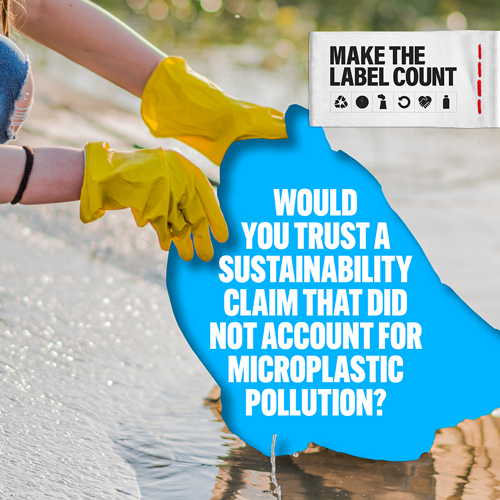AWI July Market Intelligence Reports
The monthly market intelligence report returns this month with information regarding how wool appears as good value relative to man-made fibres and in
Norway, the authorities call out greenwashing against environmental claims made by a company selling man – made fibres (MMF).
Over the last two years, the most expensive of the MMF or petro-chemical fibre alternatives, nylon, has pushed 24.6% higher which is comparable to the wool
price recovery through the COVID pandemic. Nylon is a material which is made from a combination of coal, water, petroleum, and other natural resources.
At the start of May 2022, nylon was worth around US$6,526/tonne.
During the same two year reporting period, acrylic has placed 78% more onto its value to currently sit around US$2,992/tonne. The value of acrylic is now increased to be around the same price as the 28-micron crossbred
wool type. Additionally, acrylic, like most plastic polymers, is not biodegradable like wool. Acrylic can last more than 200 years in landfill. Upon the eventual
decomposition of the fibre, it again releases several toxic materials and fumes that can pollute the atmosphere and nearby water bodies.
The past two years has seen a similarly dramatic increase in price for polyester and that MMF is currently sitting 85.5% higher at US$2,323/tonne, roughly the
price of 30-micron wool. Polyester is the dominant fibre used in textiles and makes up around 50% of the raw ingredient in garment making. Polyester garments are a significant source of microplastic pollution. Additionally,
polyester contains antimony, a highly toxic substance which is outlawed in some parts of the world and primarily used for fire retardant purpose. Antimony is a
carcinogen, and toxic to the heart, lungs, liver and skin.
Of the world’s total polyethylene terephthalate (PET) production – the type of polyester used in textiles – the majority at around 60% is used to make fibres for textiles and just 30% used to manufacture bottles. Annual PET production requires 104 million barrels of oil which equates to a need of 70 million barrels annually to produce the virgin polyester used in fabrics. That means
most polyester is manufactured specifically to be made into fibres, not bottles.
In a blow against MMF textiles, the Norwegian Consumer Agency (NCA) has recently ruled against a company using false claims of environmental credibly
and has ruled the marketing illegal.
The historic move calls into question the current environmental assessment method for textiles in Europe that use the Higg MSI tool. In doing so, the ruling also implicates the European Union’s proposed Product Environmental Footprint (PEF) legislation for textiles due to it being founded on Higg methodology.
“The textile industry must be aware that marketing of environmental benefits, which is based on the industry tool Higg MSI, can easily be considered misleading and illegal marketing.” NCA CEO Trond Rønningen stated in a
letter to various fashion brands.
Rønningen adds how “when the clothing industry and others use environmental claims in marketing, it is important that the environmental claims are correct. It
is a basic principle that marketing should be truthful and give the most balanced and precise impression of any environmental benefits. If not, consumers risk making purchasing choices on the wrong basis.
A consequence of this is that businesses must be able to document to the Norwegian Consumer Agency that the allegations they make are correct. If companies do not have such documentation, or not sufficiently accurate
documentation, the marketing will easily be considered misleading and will be prohibited.”
Various companies have been warned by NCA regarding advertising that has no documentation to underpin their marketing claims.
Higg MSI is a commercial tool developed by the American organization, SAC (Sustainable Apparel Coalition) to provide a standardized measurement of the
environmental impacts of different textile types in the manufacture of clothing.
The tool only “measures” the environmental impact of different types of textiles until the textile itself has been produced – i.e. not the entire environmental
impact of a finished garment you buy in the store. This “measurement” is based on average figures for the environmental impact of the various types of textiles that have been sourced from different regions and countries in the world.
Whilst the European Commission’s Product Environmental Footprint (PEF) proposal aims to measure the environmental impacts of all clothing life stages,
the accounting methodology is currently incomplete. It downplays or excludes critical environmental impacts and does not reflect the EU’s own sustainability and circularity goals.
The International Wool Textile Organisation (IWTO), with significant assistance from Australian Wool Innovation (AWI), continues to push for more accurate
representation of the environmental footprint of textiles, based on proven science.
The “Make the Label Count” campaign continues to educate the greater textile industry about the true and lasting benefits of wool as a natural, renewable and
biodegradable fibre.
Dalena White, Secretary General of the International Wool Textile Organisation and Make the Label Count co-spokesperson said “we’ve had major advancements in research and knowledge around the environmental
impacts of the textile industry, but these aren’t yet included in the current PEF methodology. If the Commission proceeds to use the PEF without updating
it, the fashion and textile industry won’t make the green transition we all want to see.
Source: AWI


